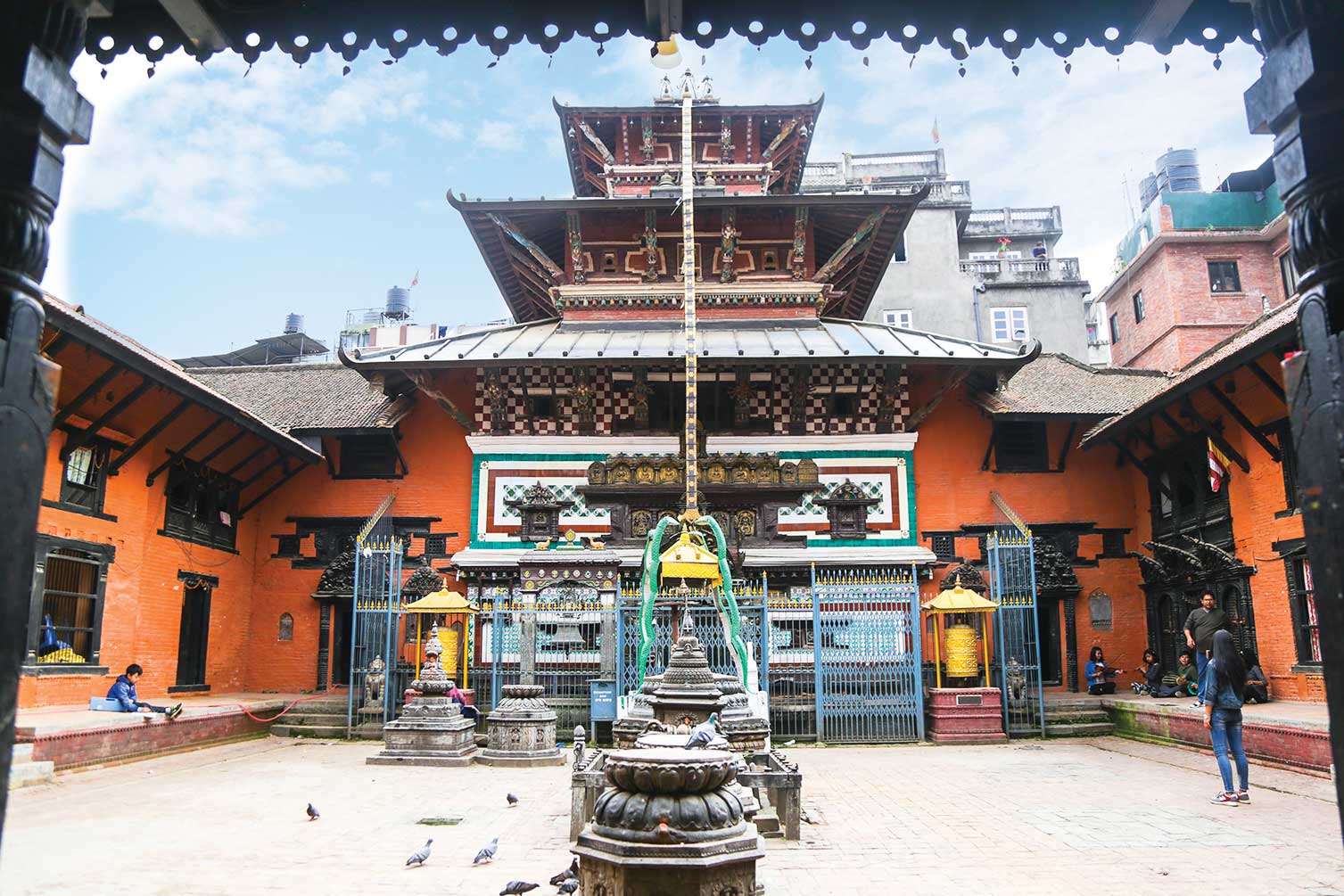Since ancient times Pharping, in the southwest of the Kathmandu Valley, has been the seat of the deities and holy men. For Hindus Pharping spells Dakshinkali, the proverbial goddess and one of the famous shakti-peeth (‘power-shrine’) in the valley. For Buddhists it is the place where the sage Padmasambhava attained enlightenment. When I headed out to Pharping, my sole intent was to visit the cave and leave it to that; the temple of Dakshinkali was not on my itinerary. I was blissfully unaware of the thread that unites these two deities, until a monk pointed it out to me.
 The cave where Padmasambhava is believed to have meditated for 12,000 years before he was enlightened is located a brisk fifteen-minute hike from the main bazaar, which also doubles as the bus terminal. From Pharping bazaar keep to your right and take the path that is brightly illuminated by saffron-robed monks going about their daily business. It’s easy to find your way once you are there, just head past the huge and perennially angry looking statue of the Padmasambhava, and start climbing the somewhat steep stairs.
The cave where Padmasambhava is believed to have meditated for 12,000 years before he was enlightened is located a brisk fifteen-minute hike from the main bazaar, which also doubles as the bus terminal. From Pharping bazaar keep to your right and take the path that is brightly illuminated by saffron-robed monks going about their daily business. It’s easy to find your way once you are there, just head past the huge and perennially angry looking statue of the Padmasambhava, and start climbing the somewhat steep stairs.
The cave is modest by every standard. It is clearly understandable that the occupier had not chosen the specific cave
for its virtue of luxury and comfort. Don’t hanker for spaciousness here and it certainly isn’t a place for claustrophobic individuals. One thing that amazed me was the feeling of serenity that flows from it, somewhat like a temple. Maybe the monk reciting prayers from the corner gave off that effect. Neatly tucked inside the small recess, along with statues of Padmasambhava and his two escorts, is a small altar illuminated by number of butter lamps. And murmuring his prayers from ancient scrolls was a monk who enlightened me on thelegend.
As the story goes, in land before time, the goddess Dakshinkali habitually devoured her devotees, which caused a lot of grievance among the villagers. Desperate for a solution, the village dwellers took their sorrows to Padmasambhava who was renowned as the ‘Realized One’. Staying true to his reputation, Padmasambhava managed to subdue the violent goddess. As the final act of mercy, Padmasambhava asked the goddess to choose between perishing and sustaining herself only on animal sacrifices. She chose the latter and her captor built her a temple at the foot of the mountains between the confluence of two rivers. Her wishes were honored; the temple we see today is said to be the same that Padmasambhava originally built to house the goddess.
Padmasambhava is also said to have saved the valley from other impending dooms on other occasions. At some other time, for example, a period of famine and bad times followed after the four narayans (Narayan is another name for Vishnu; four narayans guard the valley) who are located at the four cardinal points of the valley got into a nasty argument about their own supremacy. Using his superior tantric and magical prowess, Padmasambhava got the situation under control before it escalated further. After solving many such problems and attaining enlightenment, he made his way to Tibet where he is acknowledged as the ‘Precious Master’ or Guru Rinpoche.
With Dashain already underway, the temple will see the most devout of her followers lining up to pay her honor, with (I have to admit, it is something I detest) animal sacrifices. Thanks to Padmasambhava the goddess no longer preys on her devotees, but makes it up with animal sacrifices brought to her by the most ardent of her believers.
I sometimes wonder, now that I’ve heard and completely digested the lore, while he was at it, why didn’t Padmasambhava just turn the goddess into a vegetarian deity?











